The cat population is rising in many countries, including the UK; the PDSA Animal Wellbeing (PAW) Report 2018 estimates cat ownership in the UK at 11.1 million with 25% of the adult UK population having at least 1 cat. This increase (from 9.5 million reported in the 2013 PAW Report) in popularity is thought to be due to a variety of reasons, including increased urban dwelling and hectic home lives making dog ownership more difficult. However, the increased number of cat owning homes has not been reflected by an increase in the amount spent on feline healthcare. The lack of understanding by cat owners of the importance of regular veterinary visits for preventative healthcare has a role to play, along with the inherent stress owners feel when taking their cat to the veterinary clinic. A recent paper by Johnston et al (2017) showed that cat owners in Australia and New Zealand included the perceived stress of a clinic visit as a reason not to take their cat to the veterinary practice, which supports findings reported in both the UK and US (Habacher et al, 2010; Volk et al, 2014).
The International Society of Feline Medicine (ISFM) Cat Friendly Clinic accreditation programme is designed to help veterinary clinics understand how to create a welcoming environment for both cats and their owners (Table 1). Although not all clinics will go on to become accredited, the information contained in the programme can help all clinics consider small changes to make the veterinary environment less stressful for cats. The programme includes:
| Bronze | Silver | Gold | |
|---|---|---|---|
| Waiting room | Cat-only appointment blocks if no separate area for cats | Must have separate area in waiting room for cats | Additional facilities in waiting room (baskets off floor etc.) |
| Hospitalisation | Not required on premises | Dogs and cats separated in ward and minimum cage sizes | Must have separate cat ward and larger cages sizes |
| Consultations | Safe, secure and well equipped consulting room. A minimum duration of 10 minutes for consultation times | A dedicated cat consulting room. 15 minute consultations | |
| Operations | Surgical facilities not required on premises | Must be able to anaesthetise cats if needed | Must have a separate dedicated operating theatre |
| Equipment | Good level of feline-friendly equipment required | Additional equipment, e.g. x-rays, dental facilities, etc | Higher level required, e.g. laboratory equipment, etc. |
Where to start?
Assessing how the clinic is viewed by a new client can be a good place to start. When a client looks at the practice's website, is it easy for them to see that cats are welcome? Is there easy-to-find, good quality cat information readily available for cat owners, either in the waiting room or on the clinic's website or social media?
The clinic may already be working in many cat friendly ways — do you know how cat friendly your clients think you are already? Feedback (question cards at the clinic or online) allows the clinic to understand the client's experience during their visit. Mystery shopping at the clinic can also give an insight into the quality of service provided, and point out areas that the veterinary practice team may not have previously been aware of.
The veterinary team
In order for the cat-friendly ethos to pervade the clinic, all of the healthcare team need to be on board. Some people are naturally more empathetic towards cats than others, and are able to handle them in a calm and relaxed manner. These team members are often cat owners themselves (Pereira et al, 2014), and can help with teaching others in the team about the different mindset required when dealing with cats compared with dogs. Ideally there is at least one Cat Advocate within the clinic, with a responsibility to ensure the needs of feline patients are considered throughout a clinic visit/hospital stay. Members of the team may have further qualifications related to cats, and cat owners should know who these members of staff are via a picture board in the waiting room or online.
Of course, it is not just understanding cats that is important; understanding the owner and appreciating the difficulties they may face when accessing veterinary healthcare for their cat (e.g. bringing the cat to the clinic or giving the cat medicine) is important too.
It is important to consider the stressors a cat is exposed to when visiting the clinic, and ways to minimise their impact. These include:
Advising owners on the most appropriate ways to bring their cat to the clinic, and helping them remain calm and relaxed, makes a huge difference right from the start. This information can be provided verbally on booking an appointment, but then followed up with written information on the clinic's website, or leaflets available in the waiting room. Areas that can be of immense help to owners include:
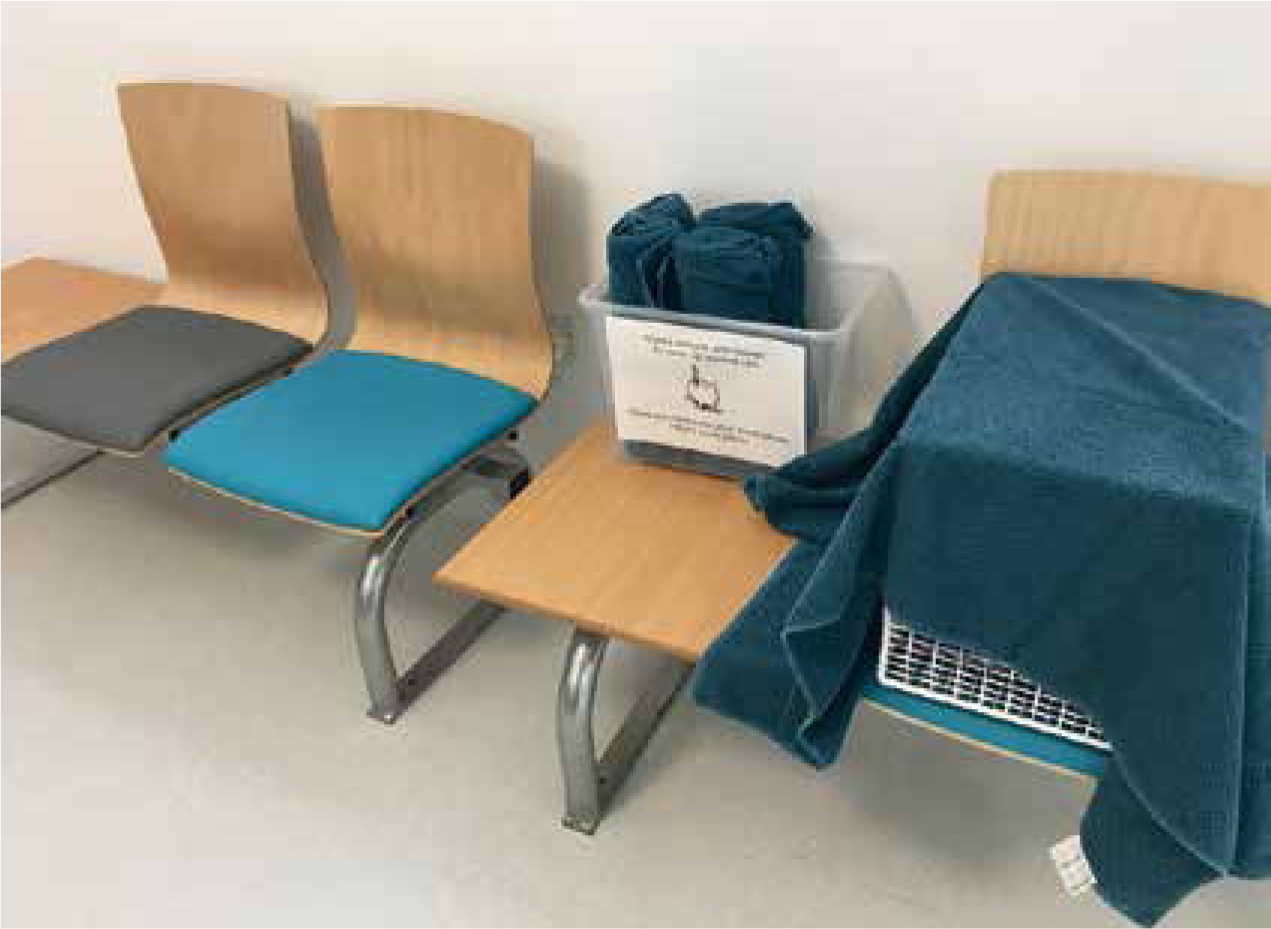
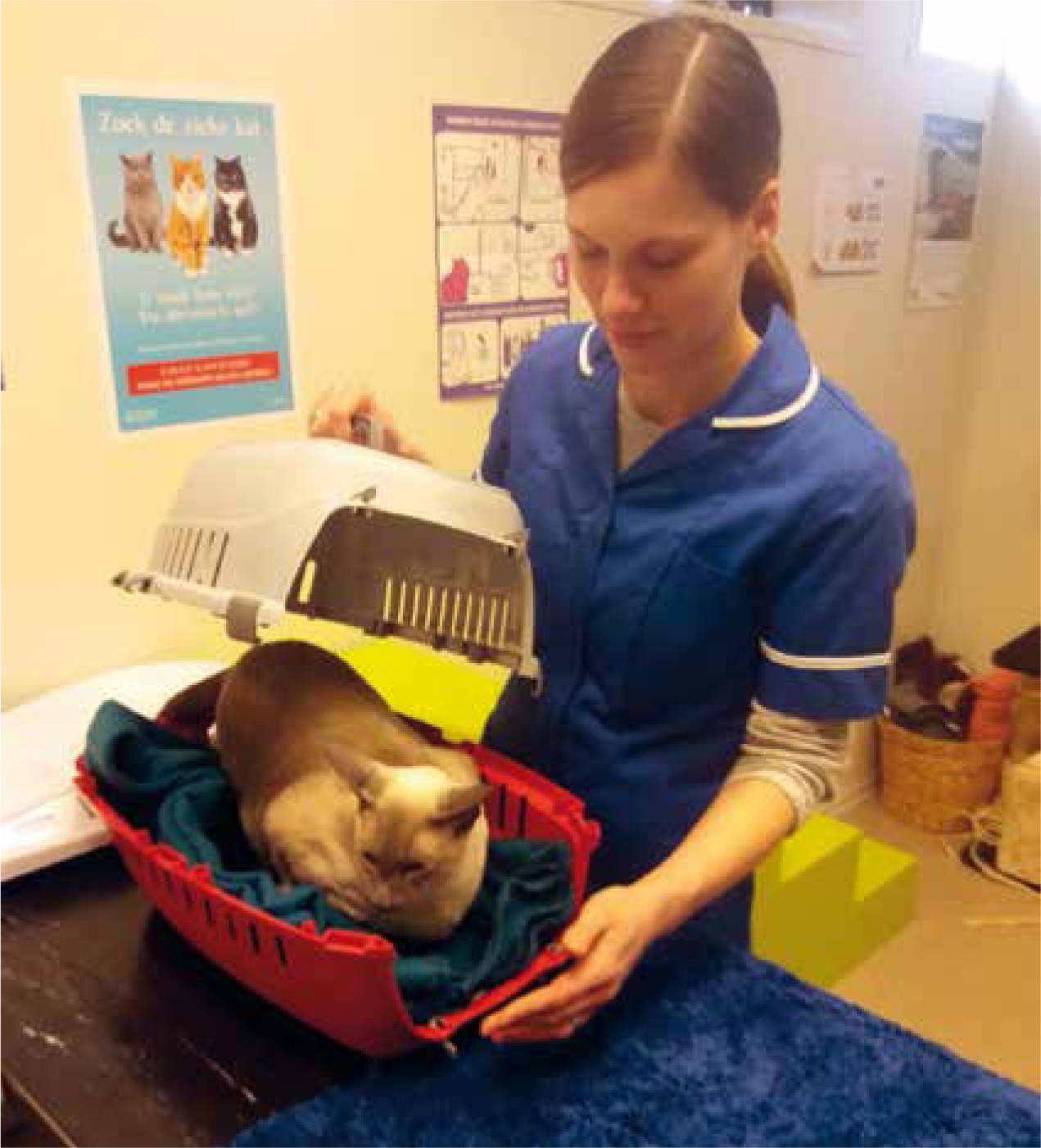
Handling cats
It is important that the whole team understand how to behave around cats, whether directly involved with the handling and care of cats or not. Cats are generally sensitive to unfamiliar people and situations and their ‘body language’ may be misunderstood. Fear should be considered as a cause of any aggression, and subtle signs of stress or pain can easily be overlooked. Simply being aware that the cat is likely to be stressed, and responding appropriately (gentle, empathetic approach, keeping cats separate from other pets and from each other etc), will be very helpful.
Handling cats well is crucial in a cat friendly clinic and time should be taken to ensure team members learn about cat body language and handling techniques. Further information on reading body language and cat handling can be found in the AAFP/ISFM Feline-friendly handling guidelines, the AAFP/ISFM Feline-friendly nursing care guidelines (Rodan et al, 2011; Carney et al, 2012), and ISFM have recently produced some videos for veterinary professionals and cat owners (https://www.youtube.com/playlist?list=PLp5A851vjwHDTcFSXmi4T12vN21DyEXFQ). Some tips include:
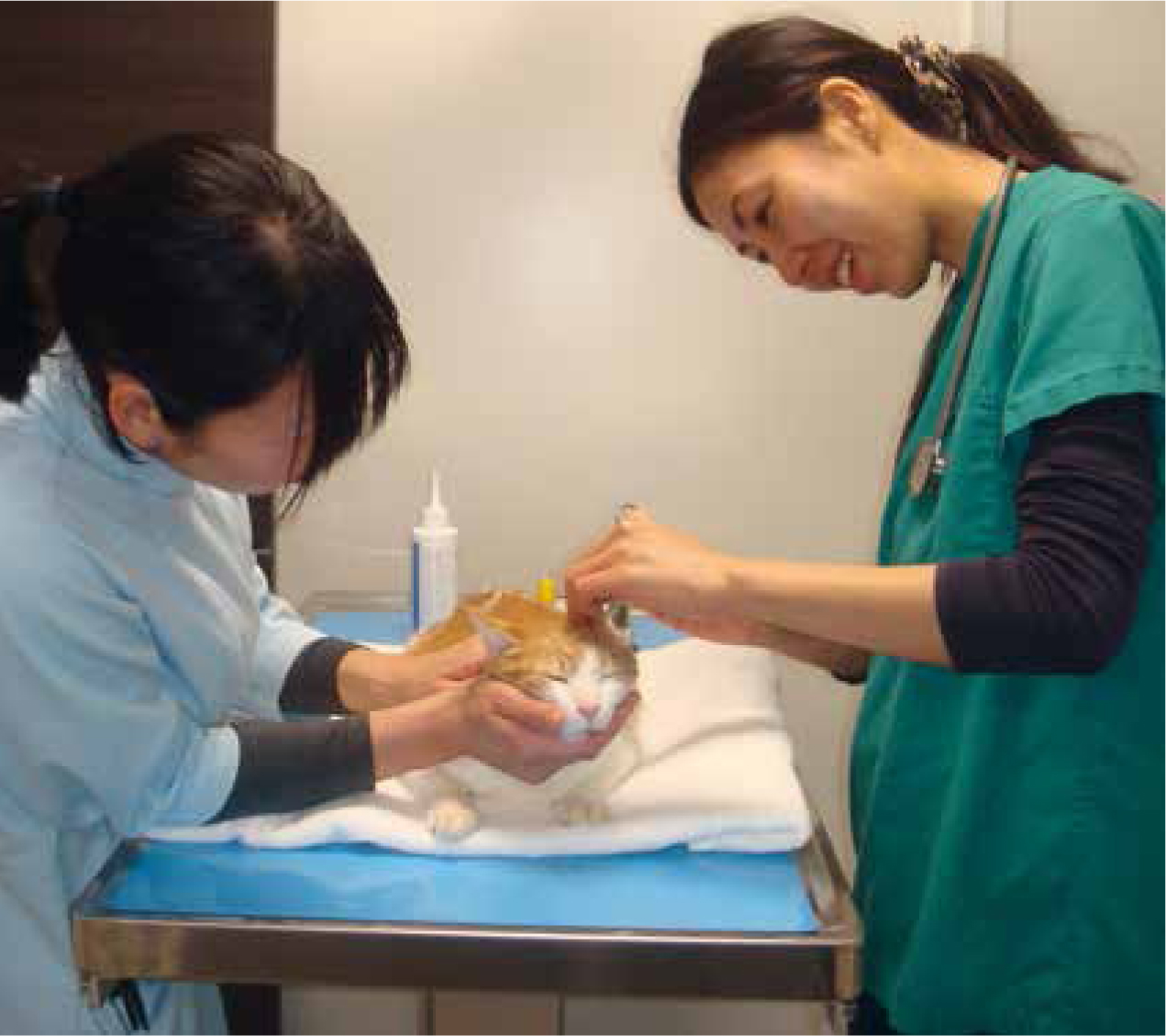
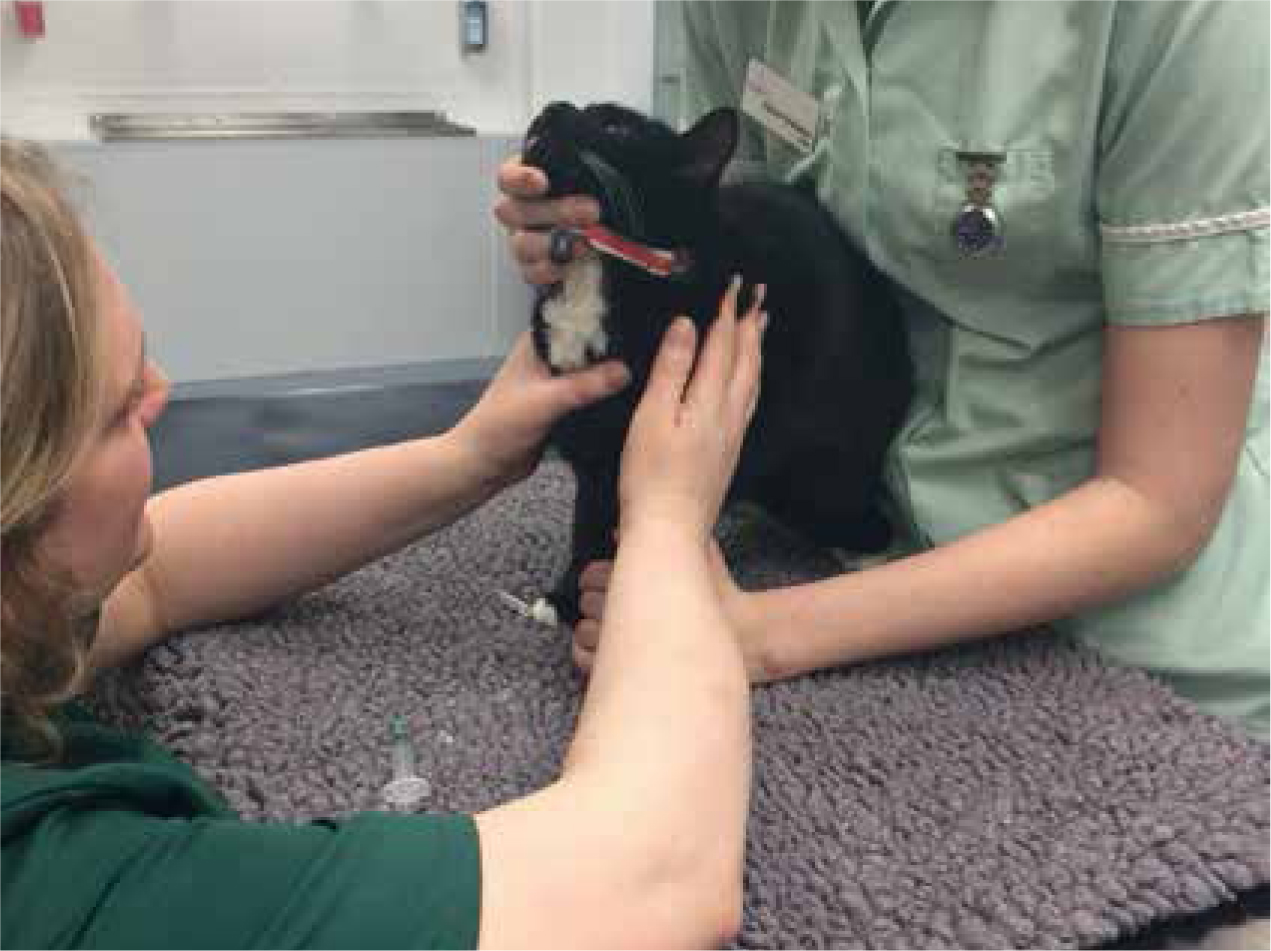
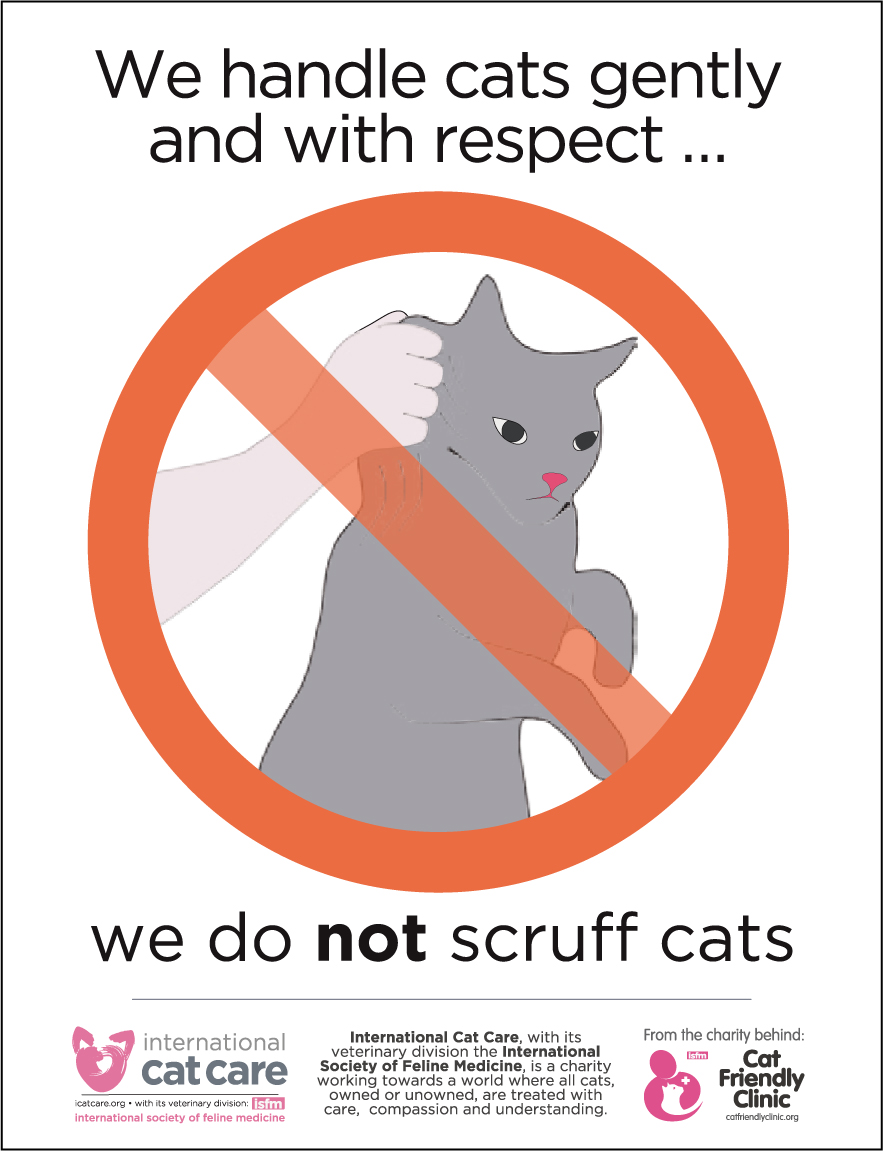
The physical building
Waiting room
This is the first room owners with their cats enter, and creating a calm, quiet, unthreatening environment benefits not only the cat, but also the humans waiting there. Cats will inevitably feel anxious and vulnerable in the clinic as they are outside their normal territory and this will inevitably be exacerbated if cats are placed next to, have eye contact with, or have to share the space with dogs. Providing a separate area within the waiting room, if a completely separate room (Figure 6) is not possible, will make the space less intimidating. The two areas should be separated by a sight barrier to prevent cats seeing dogs and vice versa. This can be a permanent barrier (such as a wall) or a temporary or semi-temporary partition. Many items can be used to create a barrier, such as noticeboards, shelving units, potted plants or something bespoke (Figure 7). Of course, it may still be possible to hear noisy dogs — if possible, ask the dog owner to wait outside or in their car with their dog until it is time for their appointment.
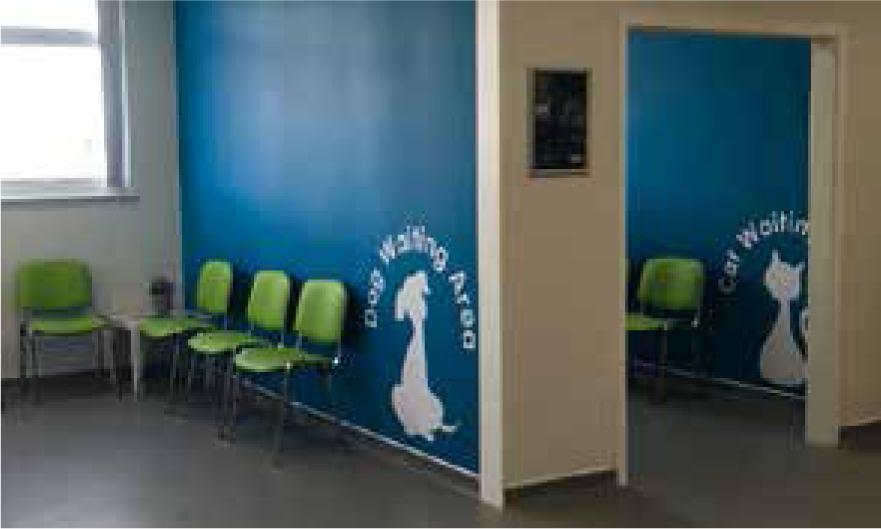
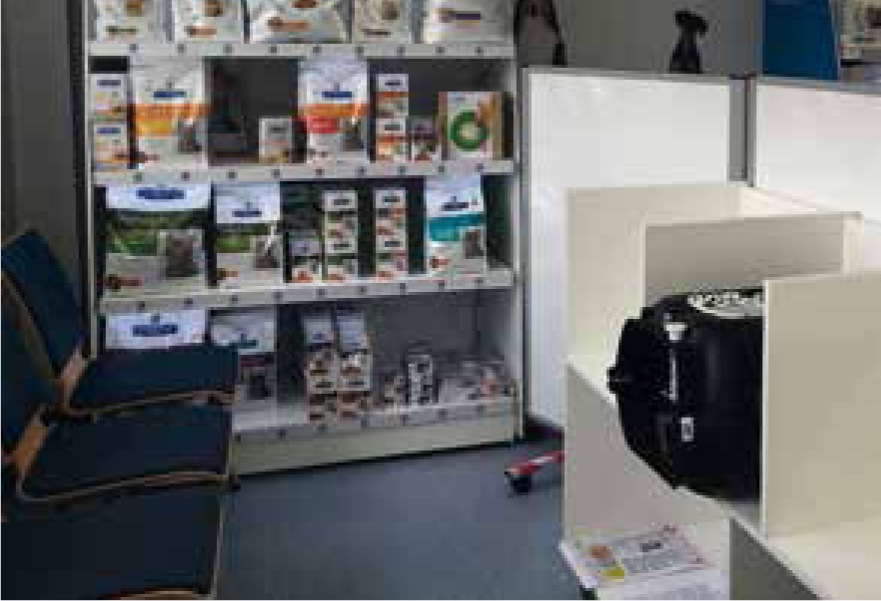
Cats feel more vulnerable at floor/ground level (their natural instinct is to find a vantage point above ground level where they can rest and observe in relative safety). Therefore there should be opportunities to place cat carriers off the floor in the waiting area. This can be achieved by simply asking all cat owners to place their carriers on the chairs, or provide small tables, or even shelving units. It is important not to forget somewhere elevated near to the reception desk too (Figure 8). However the elevation is achieved, it is important that it is made clear to owners to use these spots.
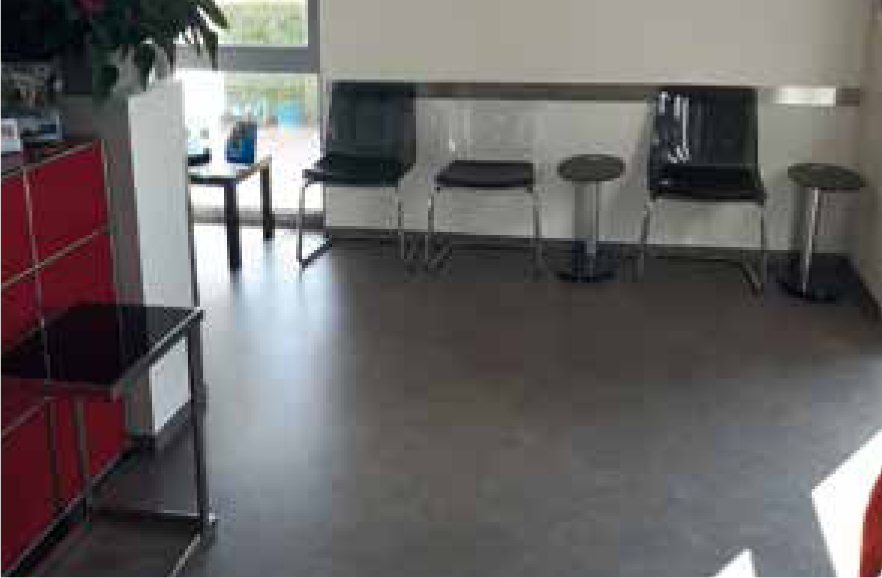
Direct eye contact between cats should be avoided, and there needs to be effective sneeze barriers to help prevent spread of infectious diseases. If this is not possible with physical built in barriers, a supply of clean blankets or towels in the waiting area should be provided for clients to place over their carriers (Figure 9).
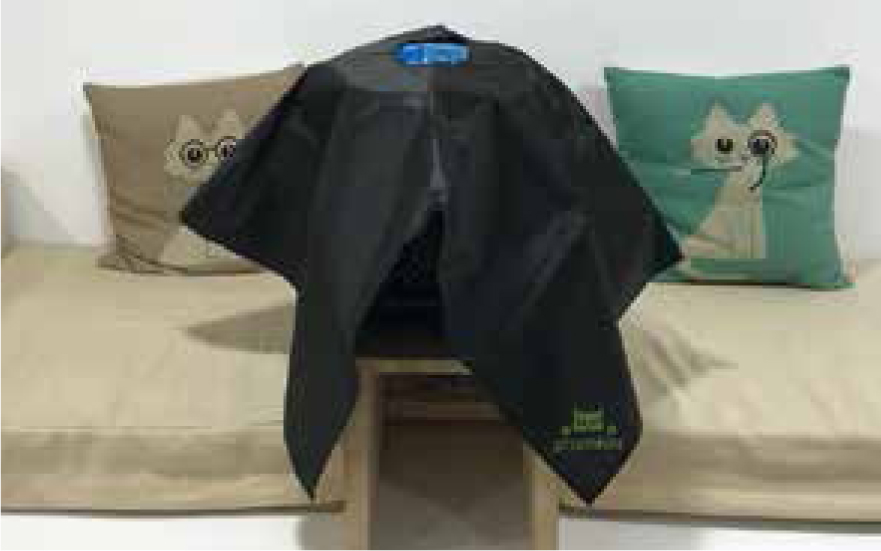
When setting up the cat waiting area, consider the routes both dog and cat owners will take to get to the consulting room to minimise contact with each species on the journey.
These requirements may seem hard to accommodate in a waiting room. However, even in a clinic with a small room, if approached creatively, much can be done to reduce the stress for the cat and improve its welfare. Cat-only appointment times are an alternative if space does not allow any separation, but it is often difficult to get all cat owners to use just these dedicated times for routine appointments, resulting in dogs and cats sharing the waiting room.
Hospitalisation
Regardless of whether there is a separate cat ward, cats should be hospitalised in a quiet, relaxed, comfortable environment. A dedicated feline-only hospitalisation ward makes a real difference to the comfort of hospitalised cats. Ideally the ward should be big enough to contain a set of weighing scales, away from noisy areas of the clinic, and with a door to ensure safety and security. The noise of dogs, other cats, banging equipment or metal implements should be excluded from the cat ward as far as possible. If there is a noisy cat in the clinic, it may be preferable to keep it elsewhere in the clinic so that the other cats cannot hear it. There needs to be space for personnel to work and observe the cats without having to be right close up to the cage of a nervous cat. The room needs to be wide enough to get cats in and out of the cages without them having to be held directly in front of another patient. If there is space for a table where cats can be examined, consideration should be given to ensure the cat on the table is not observed by the other hospitalised patients (Figure 10).
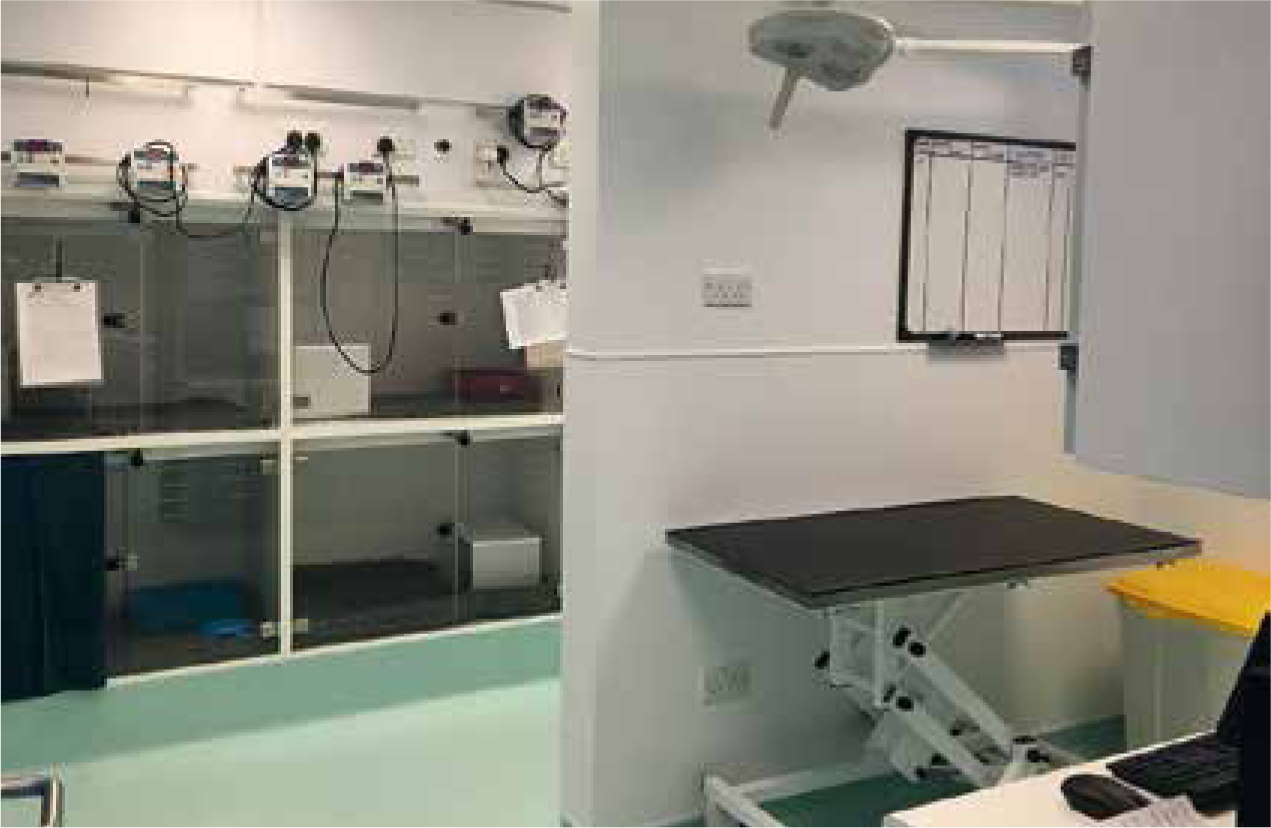
If a separate room/ward is not achievable for hospitalised cats, then dogs and cats should be separated from each other as far as possible and ideally barriers used to prevent cats seeing dogs and vice versa. Often this is achieved by using the bottom cages for dogs and the upper cages for cats and starting to use the cages from opposite ends of the ward. The use of dog appeasing pheromone (ADAPTIL, Ceva Animal Health) alongside FELIWAY Classic (Ceva Animal Health), may help in a mixed ward. If feasible, organise a timetable that allows for different species to be admitted for routine operations and investigations at different times/days.
As moving a cat is inherently stressful, ideally a cat will remain in the same cage, with spot cleaning rather than being moved to a ‘clean’ cage daily. Also nursing care is ideally provided at the clinic overnight — the level of nursing care available at the clinic overnight should be made clear to the cat owner.
While the cat is hospitalised, trying to keep a predictable routine will help (Stella et al, 2014) — this can include feeding, cage cleaning, daily checks, as well as a time for other positive handling. Depending on the cat's preferences and emotional state, 10 minutes handling the head and neck area has been found to help reduce stress in shelter cats (Gourkow et al, 2014).
Location of the ward and visibility of cats
The ward should be in a location that is easily accessible and does not require the cat to be taken through busy noisy areas to get there. However, it needs to be near enough to other areas to ensure that the cats are frequently observed, and not forgotten about. Timid, frightened or very ill cats generally need more quiet, but observation must still be straightforward. The careful use of glass panels in doors and partitions (Figure 11), having a glass wall or using video technology (Figure 12), may greatly enhance the ability to observe cats easily without being intrusive.
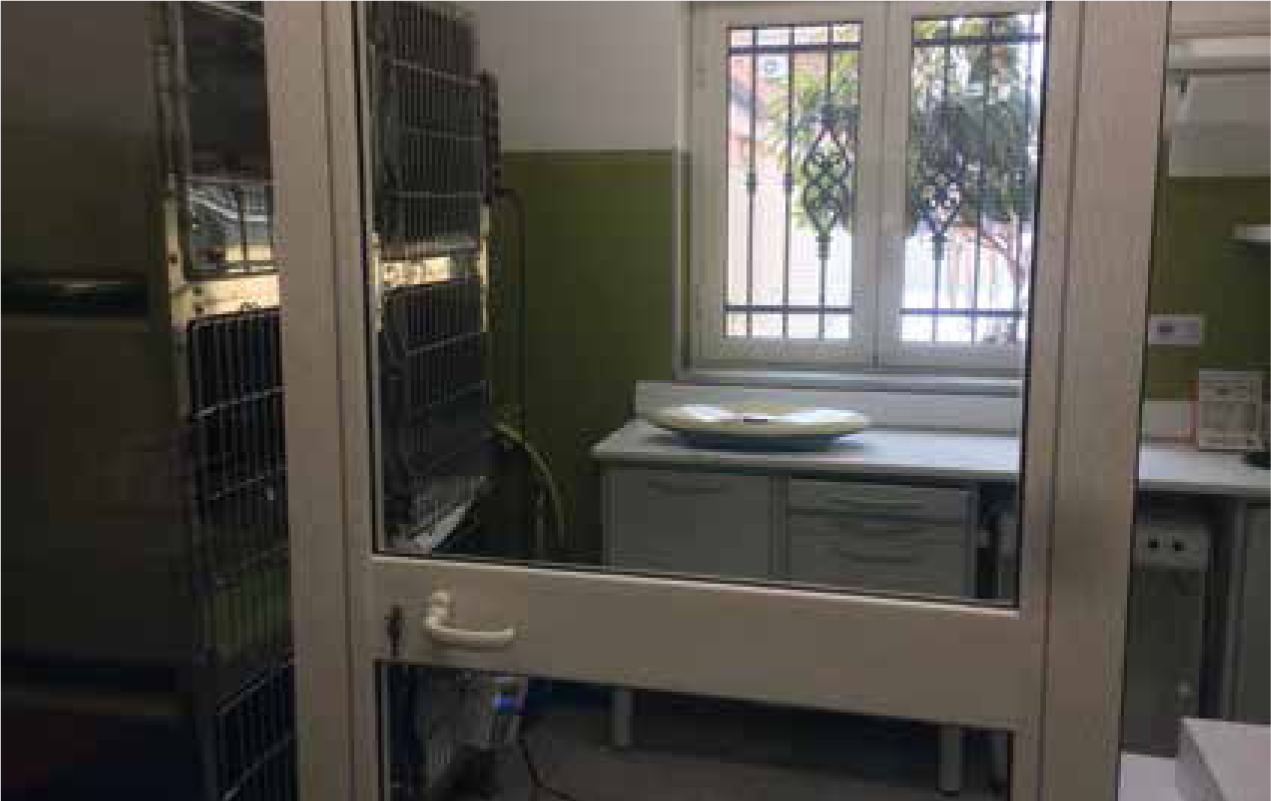
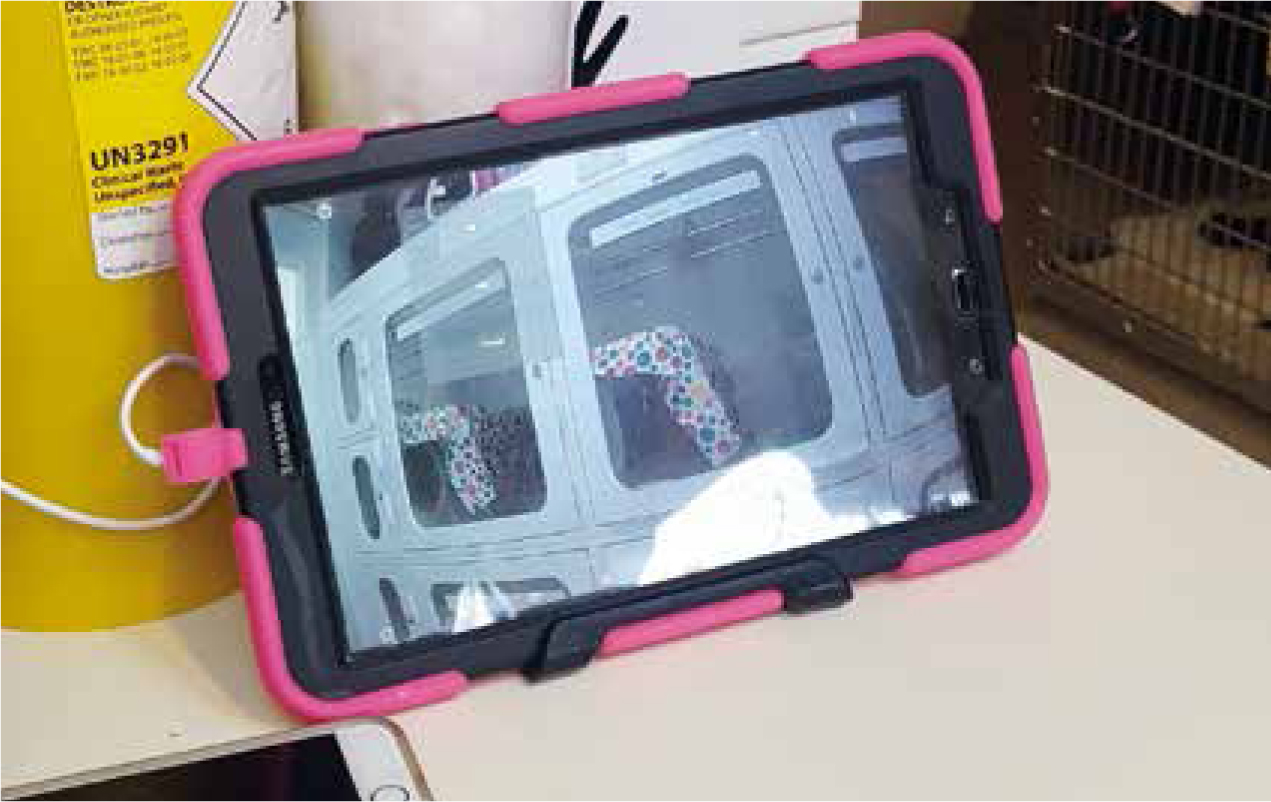
Hospital cages for cats
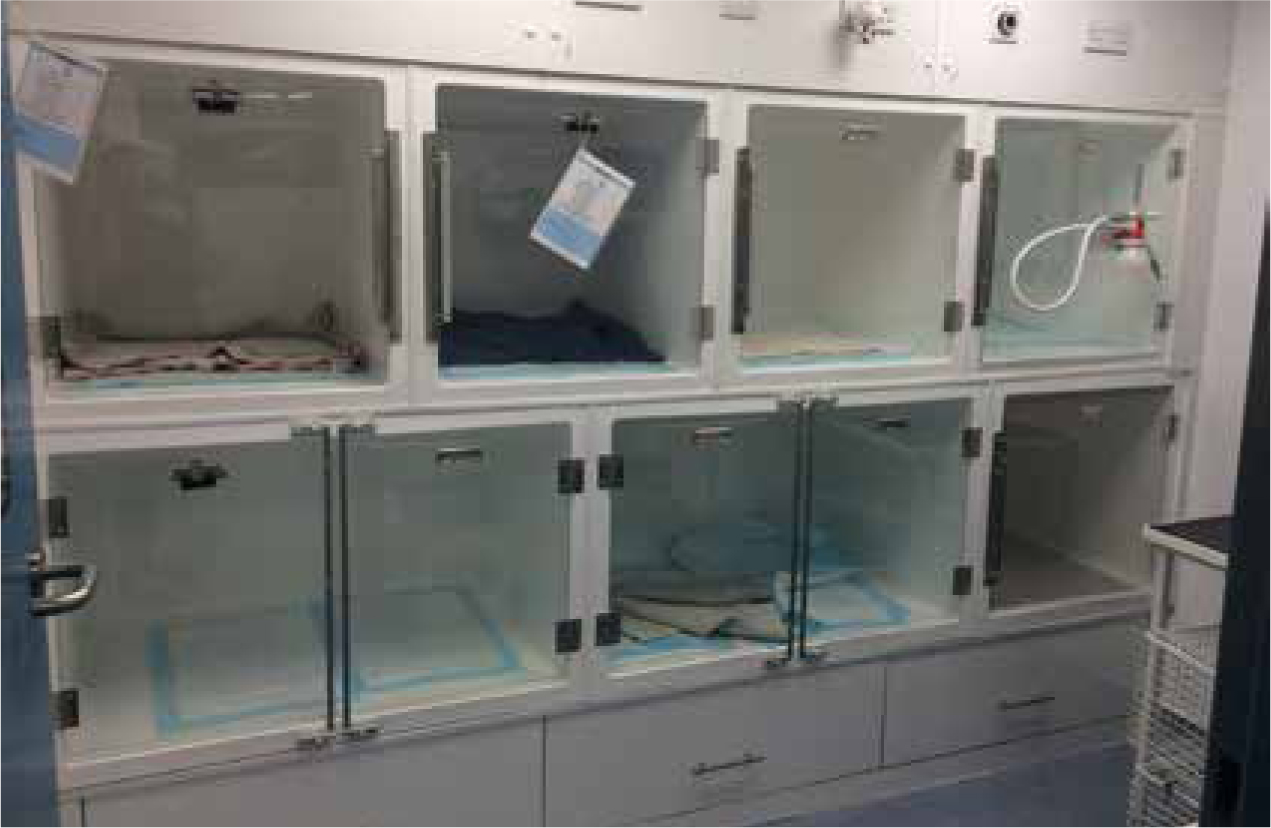
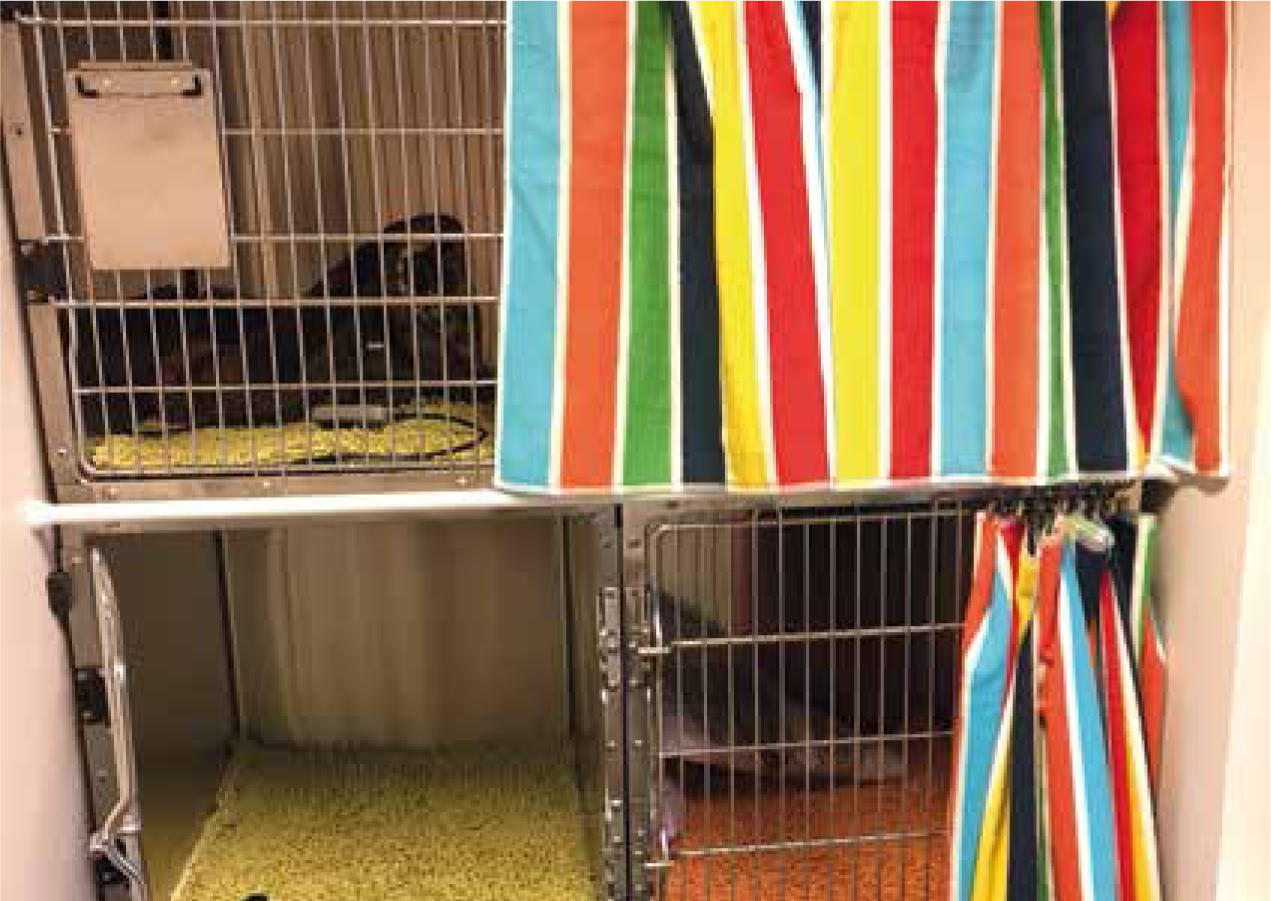
Furnishing the cage
Every effort should be made to ensure a hospitalised cat is as comfortable as possible, and has some choice and control over its environment to help reduce stress. Comfortable soft bedding should always be provided — newspaper or disposable paper can be used to line the floor of a cage if required, but soft bedding (blankets, towels, acrylic bedding etc.) should be used over most of the floor to provide a soft comfortable surface.
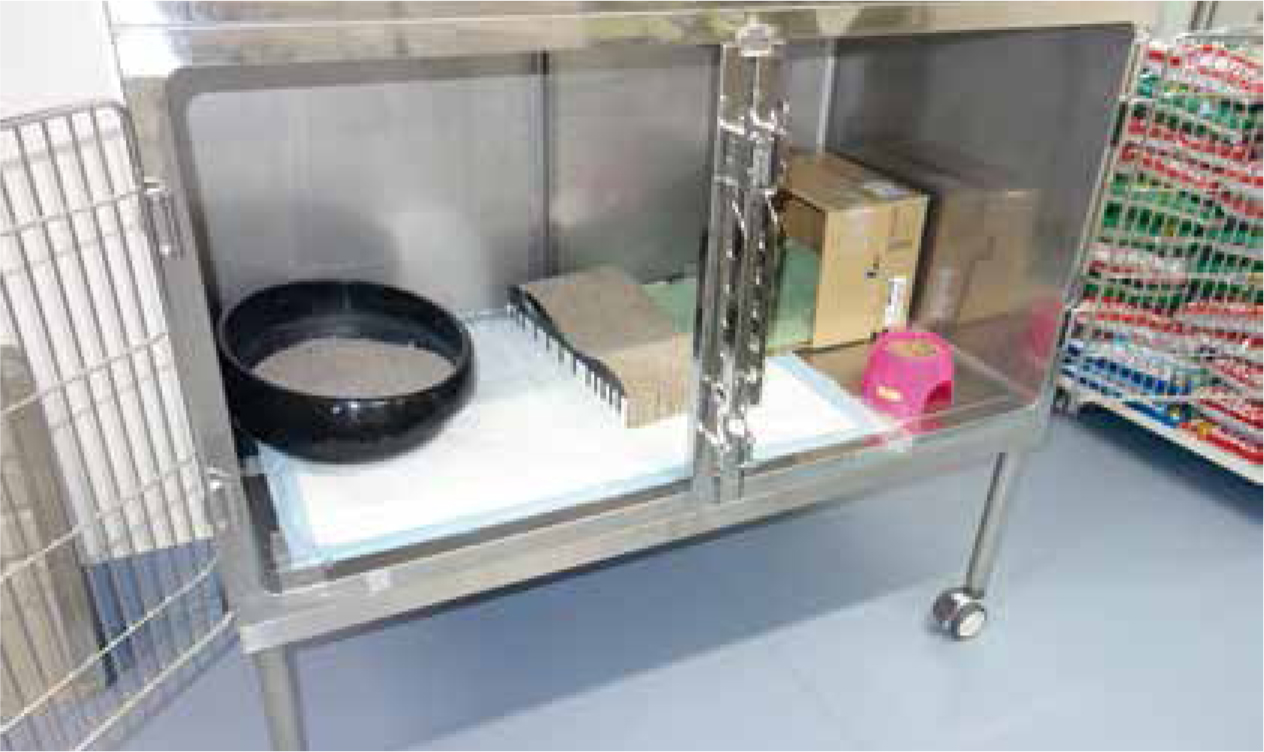
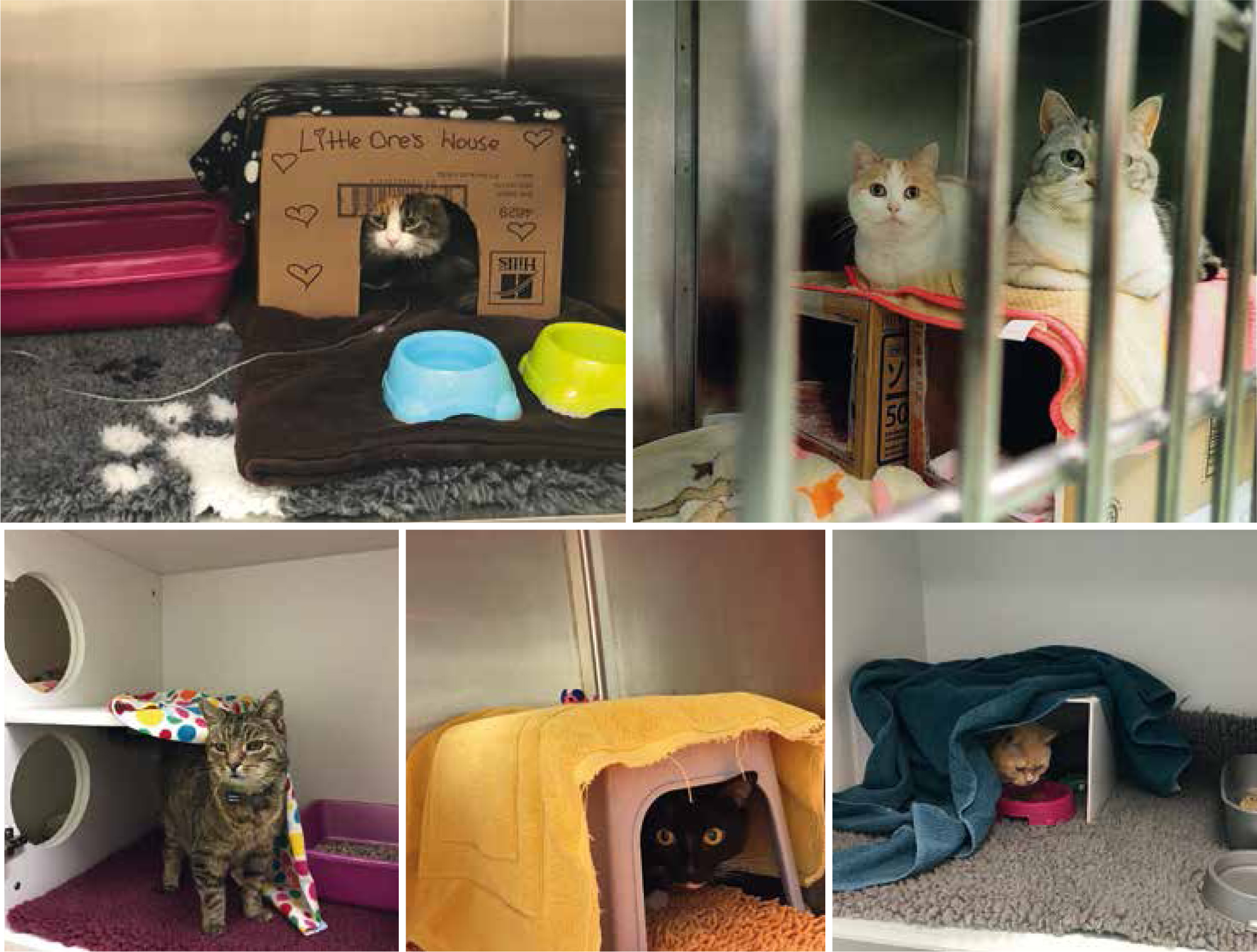
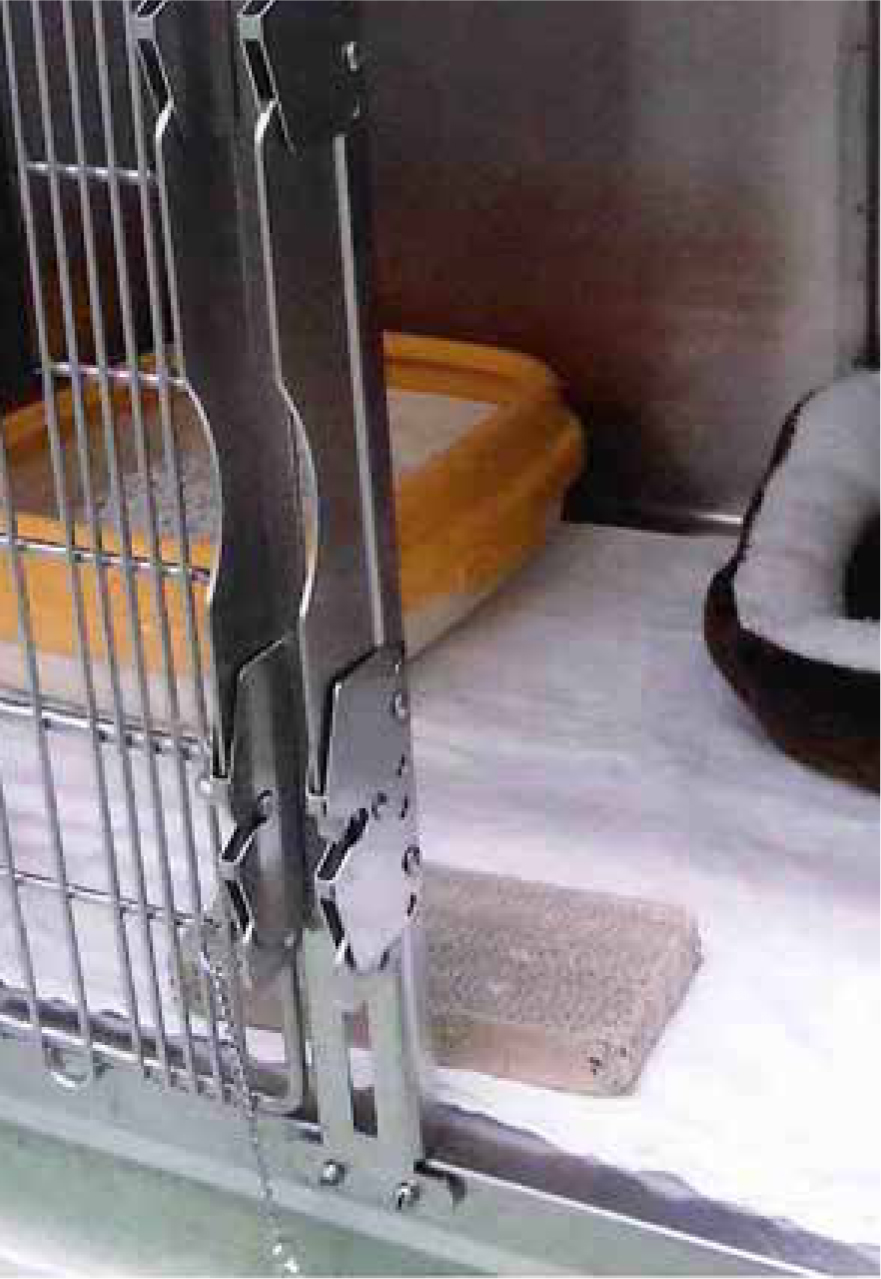
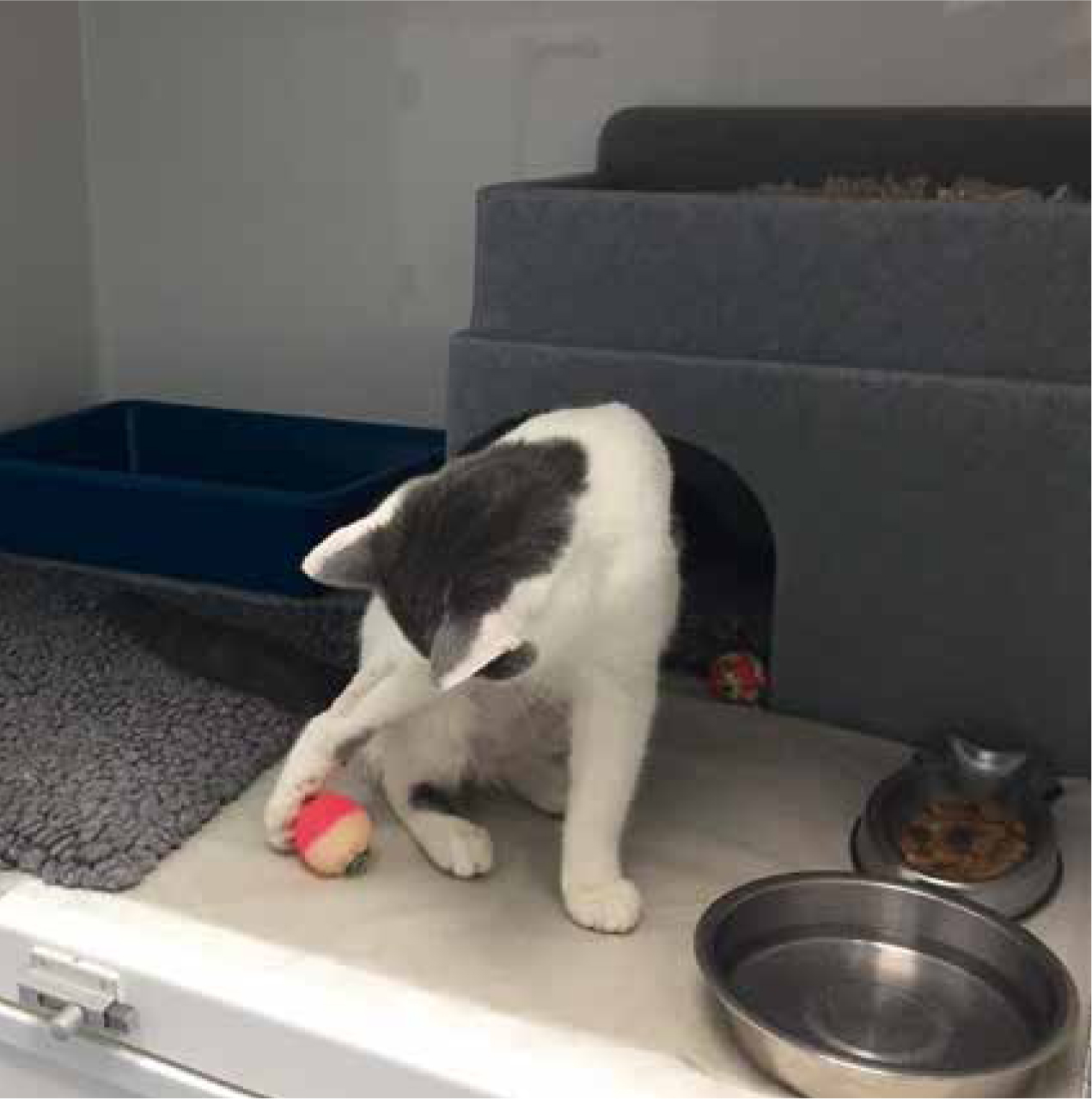
Size
This is an area that may be difficult for clinics to alter, but cages need to have at least a certain floor area in order to spread the resources placed in the cage, and to allow the cat choice (Table 2). The height is also an important consideration as cages with a greater height allow shelves, boxes or carriers to be placed in the cage providing somewhere for the cat to perch.
| Hospitalisation time | Silver | Gold | |
|---|---|---|---|
| <24 hours | Floor area | 2700 cm2 (e.g. 45x60cm) | 3600 cm2 (e.g. 60x60cm) |
| Height | 39 cm | 55 cm | |
| ≥24 hours | Floor area | 3600 cm2 (e.g. 60x60 cm) | 6300 cm2 (e.g. 90x70cm) |
| Height | 55 cm | 55 cm |
Conclusion
Becoming a cat friendly clinic will show your clients that you have considered the elements of visiting a clinic that are stressful for both cat owners and cats, and have created an environment to minimise these stressors. Veterinary clinics that make efforts to be ‘cat friendly’ can transform their client's clinic visit experience, resulting in a more positive relationship with the cat owner; they are much more likely to return for both preventive healthcare and for disease management, and compliance is likely to be much higher. Being cat friendly therefore benefits not only the cat, due to improved lifelong veterinary care, but also the clinic and the cat owner.

